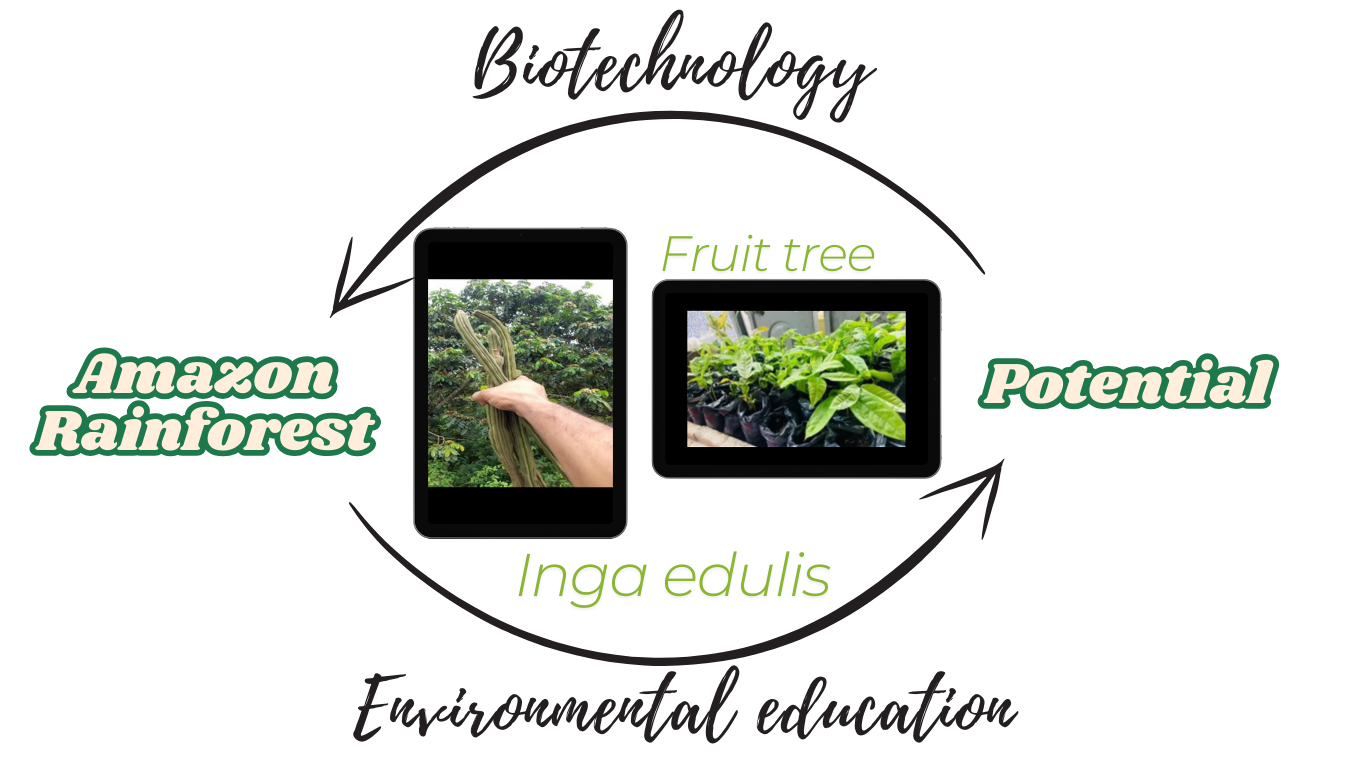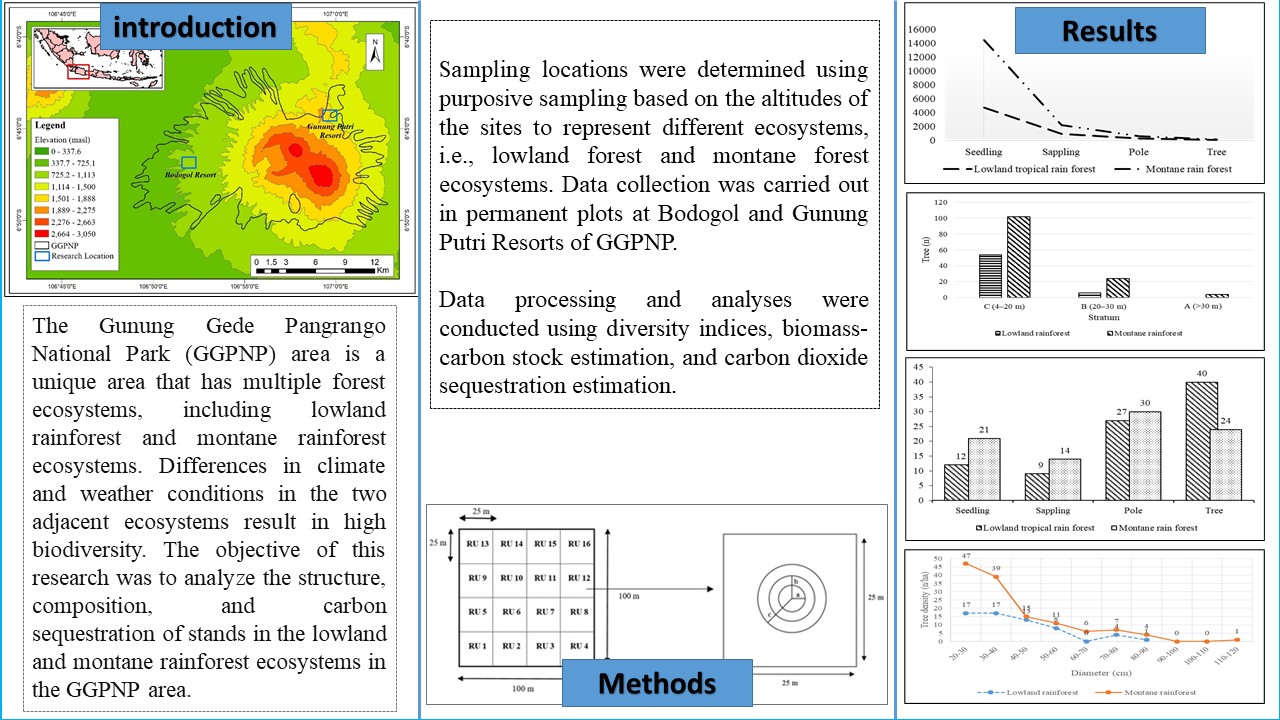CARBON SEQUESTRATION FOR AGROSILVICULTURE AGROFORESTRY PRACTICES: PRELIMINARY RESULTS FROM THREE INVESTIGATED VILLAGES IN UTTARADIT PROVINCE, NORTHERN, THAILAND

Downloads
ARTICLE HIGLIGHTS
- Agroforestry boosts carbon storage, reducing greenhouse gas emissions significantly.
- Diverse tree-based farming enhances biodiversity, soil health, and climate resilience.
- Carbon sequestration in agroforestry supports sustainable agriculture and environmental balance.
- Agroforestry practices mitigate climate change by storing carbon in trees and soil.
- Combining trees with crops provides multiple ecological and economic benefits.
ABSTRACT
One of the processes for compensating greenhouse gas emissions is atmospheric carbon removal and storage in the terrestrial biosphere. Agricultural systems to which trees are returned for careful management alongside crops and animals are thought to be substantial CO2 sinks. People are increasingly realizing the importance of agroforestry because it is good for the environment and farming. In this study, total carbon pools from the aboveground biomass carbon (ABGC), forest floor carbon (FFC), and soil organic carbon (SOC) were investigated and carbon storage data for some agroforestry practices native to Uttaradit in northern Thailand were analyzed. The role of these carbon pools in reducing CO2 concentrations in the atmosphere was also discussed. The results showed differences in the total carbon stock sourced from traditional agroforestry (TAF), applied agroforestry (AAF), and developed agroforestry (DAF). The total carbon store (ABGC + TFFC + SOC) of TAF, AAF, and DAF was 267.05 Mg C/ha, 226.48 Mg C/ha, and 324.70 Mg C/ha, respectively. SOC contributed 47.64%, 54.26%, and 44.81% and ABGC contributed 22.75%, 19.79%, and 23.90% to the total carbon stock in TAF, AAF, and DAF, respectively. The CO2 adsorption was 979.27 Mg CO2/ha, 830.50 Mg CO2/ha, and 1,190.6 Mg CO2/ha in TAF, AAF, and DAF, respectively. It is clear that agroforestry systems serve as carbon sinks in terrestrial ecosystems. Although the comparison of agroforestry practices and other land use types is important for carbon mitigation and the implementation of the “Land Use, Land Use Change, and Forestry” concept for CO2 sinks, it is also crucial to compare the potential of carbon sequestration in different CO2 pools.
Downloads
Abdelkadir A, Bishaw B. 2003. Agroforestry and community forestry for rehabilitation of degraded watersheds in the Ethiopian Highlands. Intern Symp Contemporary Devel Iss Ethiopia 78:52-75
Adisti PPH, Iskandar ZS, Supriyanto, Lilik BP, Ida T . 2016. Biodiversity, carbon stocks and community monitoring in traditional agroforestry practices: Preliminary results from two investigated villages in Berau, East Kalimantan. Procedia Environ Sci 33:376-85. DOI: https://doi.org/10.1016/j.proenv.2016.03.088
Aklilu B, Mikrewongel T, Yitebitu M, Agena A. 2015. Estimation of Carbon Stored in Agroforestry Practices in Gununo Watershed, Wolayitta Zone, Ethiopia. J Ecosys Ecograph 2015(5):1 DOI: https://doi.org/10.4172/2157-7625.1000157
Alain A, Serigne TK .2003. Carbon sequestration in tropical agroforestry systems. Agric Ecosyst Environ 99:15-27. DOI: https://doi.org/10.1016/S0167-8809(03)00138-5
Alegre JC, Rao MR. 1996. Soil and water conservation by contour hedging in the humid tropics of Peru. Agric Ecosyst Environ 57:17-25. DOI: https://doi.org/10.1016/0167-8809(95)01012-2
Asako T. 2007. Carbon sequestration potential of agroforestry systems in the west African Sahel: An assessment of biological and socio-economic feasibility. [Dissertation]. Retrieved from Department of Forest Resources and Conservation, University of Florida.
Bayala J, Balesdent J, Marol C, Zapata F, Teklehaimanot Z. 2006. Relative contribution of tree and crops to soil carbon content in a parkland system in Burkina Faso variations in natural 13C abundance. Nutr Cycl Agroecosyst 76:161-9 DOI: https://doi.org/10.1007/978-1-4020-5760-1_14
Chave J, Réjou-Méchain M, Búrquez A, Chidumayo E, Colgan MS, Delitti WB.2014. Improved allometric models to estimate the aboveground biomass of tropical trees. Glob 20(10):3177-90. DOI: https://doi.org/10.1111/gcb.12629
Dixon RK, Brown S, Houghton RA, Solomon AM, Trexler MC, Wisniewski J. 1994. Carbon pools and flux of global forest ecosystems. Science 263:185-90. DOI: https://doi.org/10.1126/science.263.5144.185
Dixon RK, 1995. Agroforestry systems: sources or sinks of greenhouse gases? Agrofor Syst 31:99-116 DOI: https://doi.org/10.1007/BF00711719
Feller C, Albrecht A, Blanchart E, Cabidoche YM, Chevallier T, Hartmann C, ..., Ndandou JF. 2001. Soil carbon sequestration in tropical areas: General considerations and analysis of some edaphic determinants for Lesser Antilles soils. Nutr Cycl Agroecosyst 61:19-31. DOI: https://doi.org/10.1007/978-94-017-2172-1_3
Gajaseni J, Gajaseni N. 1999. Ecological rationalities of the traditional homegarden system in the Chao Phraya Basin, Thailand. Agrofor Syst 46:3-23. DOI: https://doi.org/10.1023/A:1006188504677
Hairiah K, Sitompul SM, van Noordwijk M, Palm CA. 2001.Carbon stocks of tropical land use systems as part of the global carbon balance: Effects of forest conversion and options for clean development activities. Alternatives to slash-and-burn (ASB) Lecture Note 4. Bogor (D): ICRAF.
Intergovernmental Panel on Climate Change. 2006. Guidelines for national greenhouse gas inventories. Japan: International Panel on Climate Change IGES. DOI: https://doi.org/10.1017/CBO9780511546013
Intergovernmental Panel on Climate Change. 2014. Climate Change 2014: Synthesis Report. Contribution of Working Groups I, II and III to the Fifth Assessment Report of the Intergovernmental Panel on Climate Change. IPCC. Retrieved from http://www.ipcc.ch/pdf/assessment-report/ar5/syr/SYR_AR5_
FINAL_full_wcover.pdf
Krishna G, Putul B, Surabhi K, Bijoy P, Gaurav M, Dinesh KM. 2019. Tree diversity and ecosystem carbon stock assessment in Nambor Wildlife Sanctuary, Assam. Proc. Natl. Acad. Sci., India, Sect. B Biol. Sci 89(4):1421-8. DOI: https://doi.org/10.1007/s40011-018-01072-8
Kumar BM, George SJ, Suresh TK. 2001. Fodder grass productivity and soil fertility changes under four grass + tree associations in Kerala, India. Agrofor Syst 52:91-106. DOI: https://doi.org/10.1023/A:1010756018265
Kumar BM, Nair PR (Editors).2011. Carbon sequestration potential of agroforestry systems: Opportunities and challenges. Advances in Agroforestry 8. Dordrecht (NL): Springer. DOI: https://doi.org/10.1007/978-94-007-1630-8
Lal R. 2005. Forest soils and carbon sequestration. For Ecol Manage 220:242-58. DOI: https://doi.org/10.1016/j.foreco.2005.08.015
Lasco RD. 2002. Forest carbon budgets in Southeast Asia following harvesting and land cover change. Sci China C Life Sci 45:55-64
Lasco RD, Delfino RJP, Espaldon MLO. 2014. Agroforestry systems: Helping smallholders adapt to climate risks while mitigating climate change. WIREs Clim Change 5(December):825-33. DOI: 10.1002/wcc.301. DOI: https://doi.org/10.1002/wcc.301
Lehmann J, Poidy N, Schroth G, Zech W. 1998. Short-term effects of soil amendment with three legume biomass on carbon and nitrogen in particle size separates in central Togo. Soil Biol. Biochem 30:1545-52. DOI: https://doi.org/10.1016/S0038-0717(97)00153-3
Le Mer J, Roger P. 2001. Production, oxidation, emission and consumption of methane by soils: A review. Eur J Soil Biol 37:25-50. DOI: https://doi.org/10.1016/S1164-5563(01)01067-6
Malhi Y, Baldocchi DD, Jarvis PG. 1999. The carbon balance of tropical, temperate and boreal forests. Plant Cell Environ 22:712-40 DOI: https://doi.org/10.1046/j.1365-3040.1999.00453.x
Manhas RK, Negi JDS, Rajesh K, Chauhan PS. 2006. Temporal assessment of growing stock, biomass and carbon stock of Indian forests. Climatic Change 74:191-221. DOI: https://doi.org/10.1007/s10584-005-9011-4
Murdiyarso D, Suyanto DA, Widodo M. 2000. Spatial modelling of land-cover change to assess its impacts on aboveground carbon stocks: Case study in Pelepat Subwatershed of Batanghari Watershed, Jambi, Sumatra. In: Murdiyarso D, Tsuruta H (Editors). The Impacts of Land use/cover Change on Greenhouse Gas Emissions in Tropical Asia. Bogor (ID): IC-SEA; Tsukuba (JP): NIAES. p.107-28.
Nagendra H, Reyers B, Lavorel S. 2013. Impacts of land change on biodiversity: Making the link to ecosystem services. Curr Opin Environ Sustain 5:503-8. DOI: https://doi.org/10.1016/j.cosust.2013.05.010
Nair PKR, Kumar BM, Nair VD. 2009. Agroforestry as a strategy for carbon sequestration. J Plant Nutr Soil Sci 172:10-23. DOI: https://doi.org/10.1002/jpln.200800030
Nair PKR. 2010. Chapter five-carbon sequestration in agroforestry systems. Adv Agron 108:237-307. DOI: https://doi.org/10.1016/S0065-2113(10)08005-3
Nair PKR. 2011. Carbon sequestration studies in agroforestry systems: A reality-check. Agroforest Syst 86(2):243-53. DOI: 10.1007/s10457-011-9434-z DOI: https://doi.org/10.1007/s10457-011-9434-z
Nair PKR, Gordon AM, Mosquera-Losada M-R. 2008. Agro forestry. In: Jorgensen SE, Fath BD (Editors). Ecological Engineering, Encyclopedia of Ecology. Oxford (UK): Elsevier. p.101-10. DOI: https://doi.org/10.1016/B978-008045405-4.00038-0
Negash MN .2013. The indigenous agroforestry systems of the south-eastern Rift Valley escarpment, Ethiopia: Their biodiversity, carbon stocks, and litterfall. [Dissertation]. Retrieved from University of Helsinki.
Palm CA, Woomer PL, Alegre JC, Arevalo L, Castilla C, Cordeiro DG. 2000. Carbon sequestration and trace gas emissions in slash-and-burn and alternative land-uses in the humid tropics. ASB Climate Change Working Group Final Report, Phase II. Nairobi, Kenya.
Patrick KM, Cadisch G, Albrecht A, Palm CA, Verchot L.1995. Potential of agroforestry for carbon sequestration and mitigation of greenhouse gas emissions from soils in the tropics. Nutr 71:43-54. DOI: https://doi.org/10.1007/s10705-004-5285-6
Pongpichai K, Surin O, Vipak J. 2019. Plant diversity in agroforestry system and food security of community in Mae Tha sub-District, Mae-On district, Chiang Mai province. Thai J For 38(1):145-55.
Ram A, Kenichi T, Srikantha H. 2020. Assessment of forest carbon stocks for REDD+ implementation in the muyong forest system of Ifugao, Philippines. Environ Monit Assess 192:571. DOI: https://doi.org/10.1007/s10661-020-08531-8
Ramachandran A, Jayakumar S, Haroon RM, Bhaskaran A, Arockiasamy DI. 2007. Carbon sequestration: Estimation of carbon stock in natural forests using geospatial technology in the Eastern Ghats of Tamil Nadu, India. Curr Sci 92(3):323-31.
Rao MR, Nair PK., Ong CK. 1998. Biophysical interactions in tropical agroforestry systems. Agrofor Syst 38:3-50. DOI: https://doi.org/10.1007/978-94-015-9008-2_1
Reta ET, Seid MD, Solomon MT. 2021. Assessment of carbon stock potential of parkland agroforestry practice: The case of Minjar Shenkora; North Shewa, Ethiopia. Environ Syst Res 10:2. DOI: https://doi.org/10.1186/s40068-020-00211-3
Romshoo SA. 2004. Radar remote sensing for monitoring of dynamic ecosystem processes related to biogeochemical exchanges in tropical peatlands. Vis Geosci 9:9-28. DOI: https://doi.org/10.1007/s10069-003-0015-9
Roy C. 1999. Options techniques et socio-économiques des émissions de CO2 et d’augmentation des stocks de carbone.CR Acad Agric France 85:311-20.
Sagar R, Raghubanshi AS, Singh JS. 2003. Tree species composition, dispersion and diversity along a disturbance gradient in a dry tropical forest region of India. Forest Ecol Manag 186:61-71. DOI: https://doi.org/10.1016/S0378-1127(03)00235-4
Samek JH, David LS, Usa K, Chetphong B, Charlie N, Pornchai U, Teerawong L. 2011. Inpang Carbon Bank in Northeast Thailand: A Community Effort in Carbon Trading from Agroforestry Projects. In: Kumar BM, Nair PKR (Editors). Carbon Sequestration Potential of Agroforestry Systems: Opportunities and Challenges. Advances in Agroforestry 8. DOI: https://doi.org/10.1007/978-94-007-1630-8_15
Smith TM, Cramer WP, Dixon,RK, Leemans R, Neilson RP, Solomon AM. 1993. The global terrestrial carbon cycle. Water Air Soil Pollut 70:19-38. DOI: https://doi.org/10.1007/BF01104986
Takahashi K, Ikeyama Y, Okuhara I. 2018. Stand dynamics and competition in a mixed forest at the northern distribution limit of evergreen hardwood species. Ecol Evol 8(22):11199-212. DOI: https://doi.org/10.1002/ece3.4592
Tsutsumi T, Yoda K, Sahunaru P, Dhanmanonda P, Prachaiyo B. 1983. Forest: Burning and regeneration. In Kyuma K, Pairintra C (Editors.). Shifting Cultivation, an Experiment at Nam Phrom, Northeast Thailand, and its Implications for Upland Farming in the Monsoon Tropics. A report of a cooperative research between Thai-Japanese Universities, Japan.
Walkley A, Black IA. 1934. An examination of Degtjareff method for determining soil organic matter, and proposed modification of the chromic acid tritation method. Soil Sci 37:29-38. DOI: https://doi.org/10.1097/00010694-193401000-00003
Woomer PL, Palm CA, Alegre J, Castilla C, Cordeiro DG, Hairiah K, ..., Noordwijk M. 2000. Slash-and-burn effects on carbon stocks in the humid tropics. In: Lal R, Kimble JM, Stewart BA (Editors). Global Climate Change and Tropical Ecosystems. Boca Raton (US): CRC Press. p. 99-115. DOI: https://doi.org/10.1201/9780203753187-5
World Agroforestry Centre. 2006. Agroforestry for improved livelihoodsand Natural resources conservation. An Agroforestry Policy Brief.
World Meteorological Organization. 2007. Greenhouse gas bulletin: Atmospheric carbon dioxide levels highest on record. Geneva (CH): World Meteorological Organization.
Copyright (c) 2024 chattanong podong

This work is licensed under a Creative Commons Attribution-NonCommercial-NoDerivatives 4.0 International License.
Authors who publish with this journal agree with the following terms:
- Authors retain copyright and grant the journal right of first publication, with the work 1 year after publication simultaneously licensed under a Creative Commons attribution-noncommerical-noderivates 4.0 International License that allows others to share, copy and redistribute the work in any medium or format, but only where the use is for non-commercial purposes and an acknowledgement of the work's authorship and initial publication in this journal is mentioned.
- Authors are able to enter into separate, additional contractual arrangements for the non-exclusive distribution of the journal's published version of the work (e.g., post it to an institutional repository or publish it in a book), with an acknowledgement of its initial publication in this journal.
- Authors are permitted and encouraged to post their work online (e.g., in institutional repositories or on their website) prior to and during the submission process, as it can lead to productive exchanges, as well as earlier and greater citation of published work (See The Effect of Open Access).




























